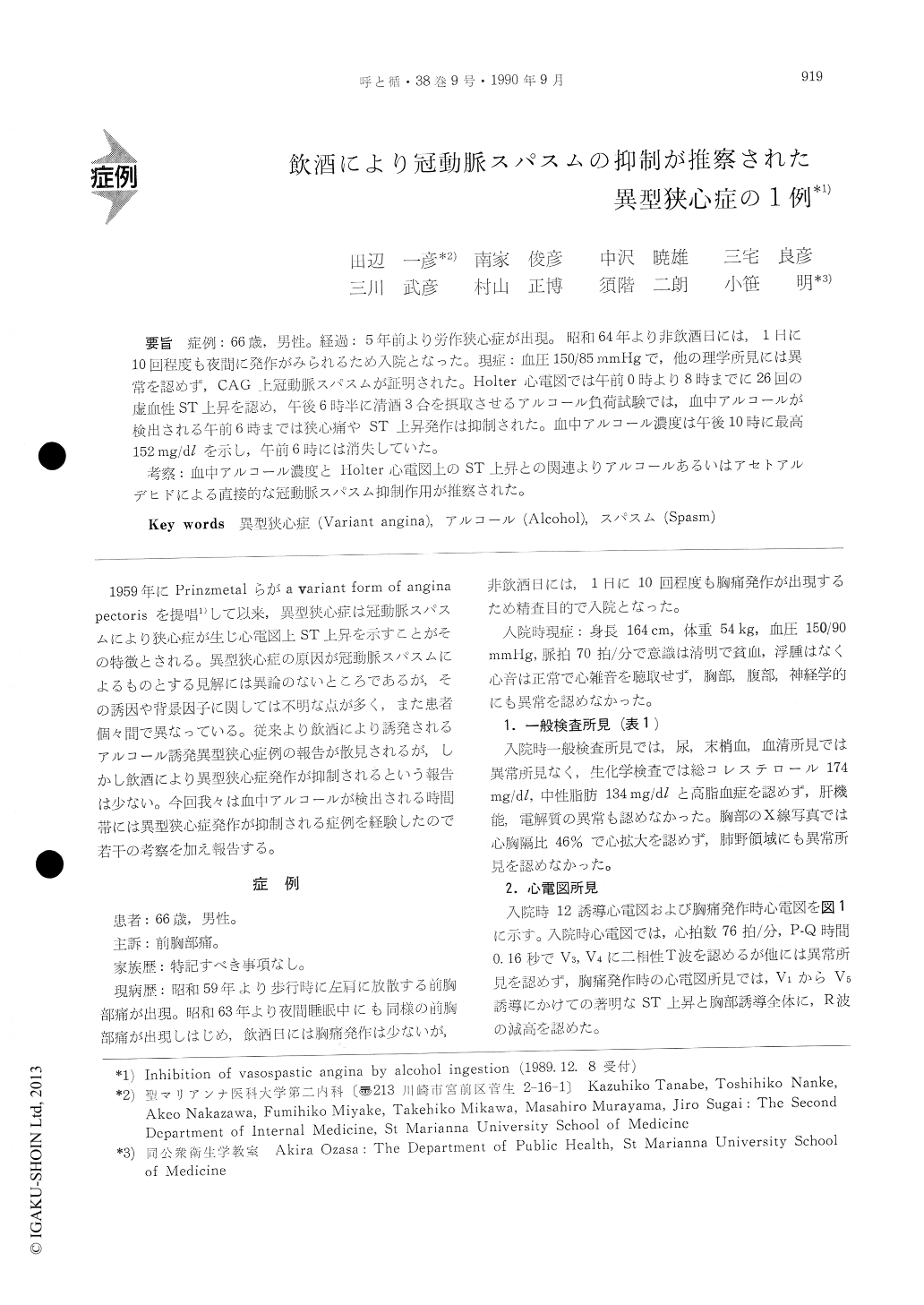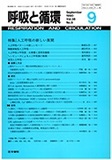Japanese
English
- 有料閲覧
- Abstract 文献概要
- 1ページ目 Look Inside
症例:66歳,男性。経過:5年前より労作狭心症が出現。昭和64年より非飲酒日には,1日に10回程度も夜間に発作がみられるため入院となった。現症:血圧150/85mmHgで,他の理学所見には異常を認めず,CAG上冠動脈スパスムが証明された。Holter心電図では午前0時より8時までに26回の虚血性ST上昇を認め,午後6時半に清酒3合を摂取させるアルコール負荷試験では,血中アルコールが検出される午前6時までは狭心痛やST上昇発作は抑制された。血中アルコール濃度は午後10時に最高152mg/dlを示し,午前6時には消失していた。
考察:血中アルコール濃度とHolter心電図上のST上昇との関連よりアルコールあるいはアセトアルデヒドによる直接的な冠動脈スパスム抑制作用が推察された。
A 66-year-old man having a long history of angina on effort has started to show frequent episodes of angina at rest since 6 months ago. He noticed that chest pain was uncommon after taking alcohol. A variant form of angina pectoris (variant angina) was diagnosed by documentation of typical ST elevation during anginal attack and also by inducing coronary arterial spasm with intracoronary administration of ergonovine maleate. Ambulatory ECG monitoring revealed frequent ST elevation during sleep. Sincethe history suggested that alcohol ingestion could be effective for preventing variant angina, this effect was examined by giving 540 ml of “sake” in the evening. Variant angina was inhibited, while plasma ethanol was detected. The plasma ethanol reached its peak value as 152mg/dl at 10 o'clock pm and returned to zero after 12 hours. When ethanol disappeared in the plasma, variant angina recurred again. Although the precise mechanism for inhibi-tion of variant angina by alcohol ingestion is not clear, alcohol or its metabolite such as acetaldehyde seems to be able to inhibit coronary arterial spasm.

Copyright © 1990, Igaku-Shoin Ltd. All rights reserved.


